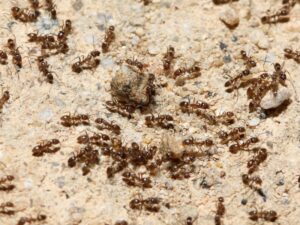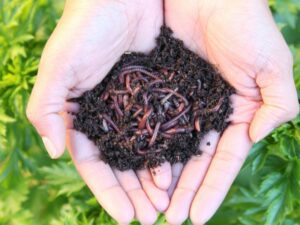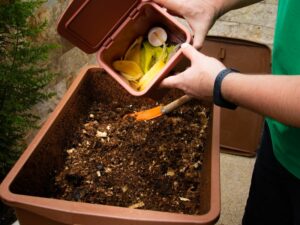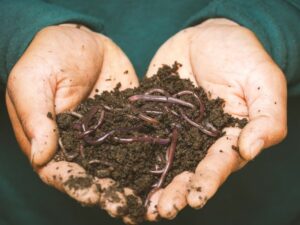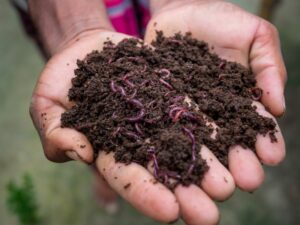Posts Tagged ‘worm compost’
How to Save Your Worm Bins From Aggressive Ants
How do you save your worm bins from aggressive ants? To find the answer, we asked our summer college interns, Maddie and Kelly, to investigate. The worm bins at Solana Center recently experienced an increase in ant populations, possibly due to the decomposing food source and the moisture the bins provided. Although most species of ants will not harm…
Read MoreFrom the Rotline: Why are my worms trying to escape?!
Question: Why are my worms climbing out of the bin and trying to escape? Answer: The Great Escape by your worms means there is an imbalance in the worm bin. If your bin becomes too acidic, too moist, too dry, too compact, full of rotting food, full of food they don’t like, too warm, too…
Read MoreDIY: Building Your Own Worm Bin & Getting Started Vermicomposting
Don’t think you have any room for traditional backyard composting at home? We hear that often from residents with small yards or who live in apartments or condos. Have you considered composting with a worm bin? Now, don’t make that face. Worm bins are easy, don’t smell, are a great way to recycle food, and…
Read MoreConstruya Su Propio Contenedor de Lombrices
Crees que no tienes espacio para hacer una composta — jardín chico, apartamento o habitante de condo? ¿Qué te parece un contenedor de lombrices? ¡Vamos, no hagas esa cara! Es fácil hacer un contenedor de lombrices. No huelen mal, son una buena forma de reciclar comida y es muy divertido (a los niños les encantan).…
Read MoreFrom the Rotline: What are the white things in my worm bin?
Rotline Question: What are the white things in my worm bin? Answer: Spot something unfamiliar in your worm bin? Don’t fret, you are likely to find many organisms other than worms in your worm bin! Like backyard composting, you will see a diverse, interdependent community of large and small organisms. They serve as food for each other,…
Read MoreWorm Care Guide
Keep the lid on the bin to protect the worms from light, to prevent escapees, and to keep flies/pests out. Keep bedding damp! When bedding gets dry, add water slowly. A layer of damp newspaper or coffee filters on top helps seal in moisture. Break or tear food into small pieces to encourage faster processing. Bury food below the…
Read MoreRotline: Is it possible to have too many worms in my vermicompost bin?
Rotline Question: Is it possible to have too many worms in my vermicompost bin? Answer: Red wiggler worms are amazing in so many ways, and population management is one of them. So, the short answer to the question is “No, you can never have too many worms!” Here’s why:As worms adjust to their home, they…
Read MoreComposting with Worms: Wiggling through Winter
Temperature is incredibly important to the productivity and livelihood of worms. Just like us, worms are happiest in moderate temperatures, so they may also need some help to thrive during the cooler months. Fortunately, most of San Diego County rarely experiences freezing temperatures, which can be deadly to worms. After all, they’re mostly water! Nonetheless,…
Read MoreSquiggling into Summer with Worm Composting
Our temperate San Diego weather is usually perfect for accommodating the red wrigglers used for vermicomposting. Their preference is for temperature ranges of 55 – 77° F, but they can tolerate temperatures above and below this range. Temperatures should be measured inside the bin since they can vary significantly from external measurements. As we approach…
Read MoreRed Wiggler Worm Reproduction
As composters, we definitely love our worms. And if you have a healthy vermicompost bin, then you definitely know there’s lots of love between the worms, too. But how exactly do our worm bins become so populous? Red wiggler worms are frequent reproducers. If conditions in the bin are ideal, each worm can produce up…
Read More
